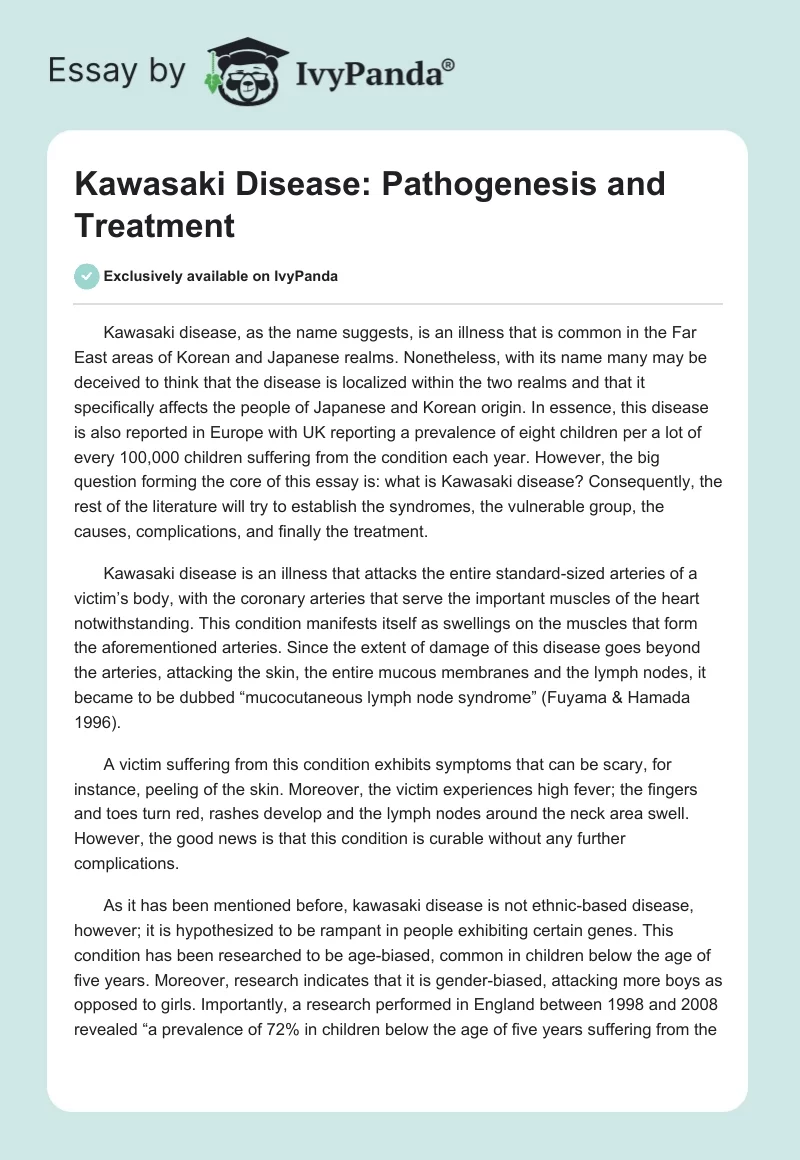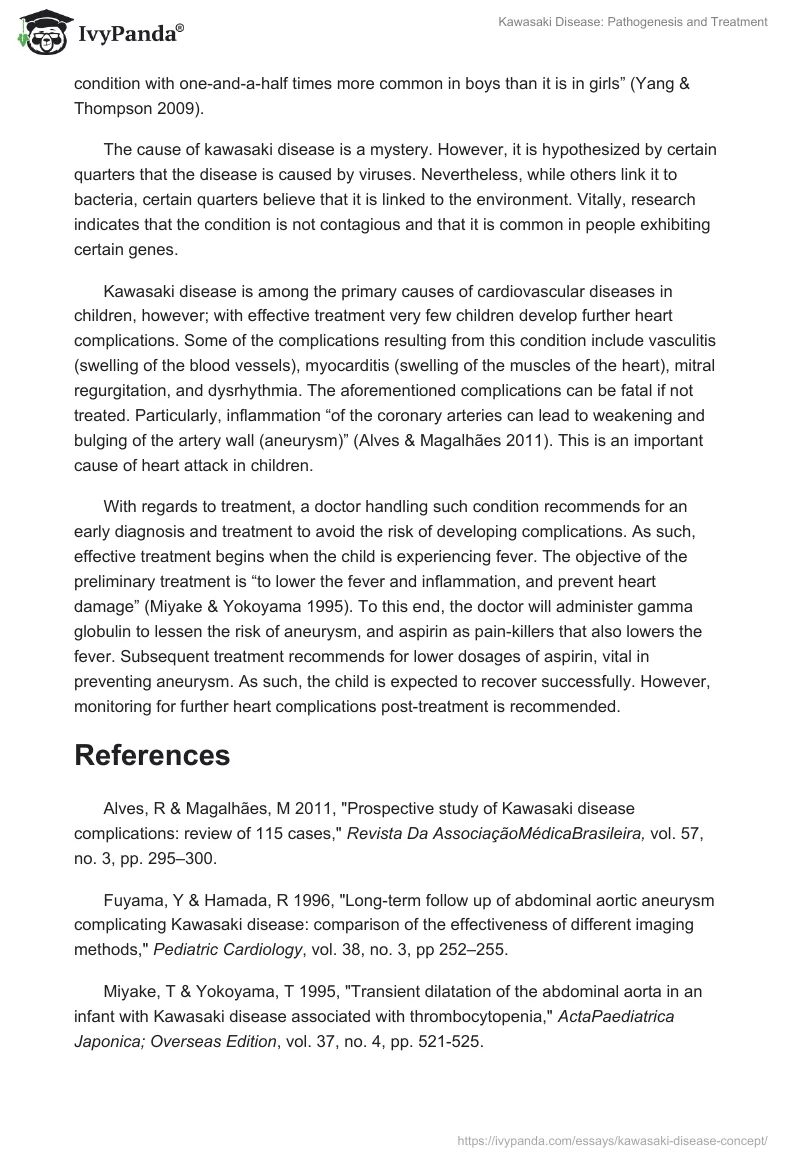Kawasaki disease, as the name suggests, is an illness that is common in the Far East areas of Korean and Japanese realms. Nonetheless, with its name many may be deceived to think that the disease is localized within the two realms and that it specifically affects the people of Japanese and Korean origin. In essence, this disease is also reported in Europe with UK reporting a prevalence of eight children per a lot of every 100,000 children suffering from the condition each year. However, the big question forming the core of this essay is: what is Kawasaki disease? Consequently, the rest of the literature will try to establish the syndromes, the vulnerable group, the causes, complications, and finally the treatment.
Kawasaki disease is an illness that attacks the entire standard-sized arteries of a victim’s body, with the coronary arteries that serve the important muscles of the heart notwithstanding. This condition manifests itself as swellings on the muscles that form the aforementioned arteries. Since the extent of damage of this disease goes beyond the arteries, attacking the skin, the entire mucous membranes and the lymph nodes, it became to be dubbed “mucocutaneous lymph node syndrome” (Fuyama & Hamada 1996).
A victim suffering from this condition exhibits symptoms that can be scary, for instance, peeling of the skin. Moreover, the victim experiences high fever; the fingers and toes turn red, rashes develop and the lymph nodes around the neck area swell. However, the good news is that this condition is curable without any further complications.
As it has been mentioned before, kawasaki disease is not ethnic-based disease, however; it is hypothesized to be rampant in people exhibiting certain genes. This condition has been researched to be age-biased, common in children below the age of five years. Moreover, research indicates that it is gender-biased, attacking more boys as opposed to girls. Importantly, a research performed in England between 1998 and 2008 revealed “a prevalence of 72% in children below the age of five years suffering from the condition with one-and-a-half times more common in boys than it is in girls” (Yang & Thompson 2009).
The cause of kawasaki disease is a mystery. However, it is hypothesized by certain quarters that the disease is caused by viruses. Nevertheless, while others link it to bacteria, certain quarters believe that it is linked to the environment. Vitally, research indicates that the condition is not contagious and that it is common in people exhibiting certain genes.
Kawasaki disease is among the primary causes of cardiovascular diseases in children, however; with effective treatment very few children develop further heart complications. Some of the complications resulting from this condition include vasculitis (swelling of the blood vessels), myocarditis (swelling of the muscles of the heart), mitral regurgitation, and dysrhythmia. The aforementioned complications can be fatal if not treated. Particularly, inflammation “of the coronary arteries can lead to weakening and bulging of the artery wall (aneurysm)” (Alves & Magalhães 2011). This is an important cause of heart attack in children.
With regards to treatment, a doctor handling such condition recommends for an early diagnosis and treatment to avoid the risk of developing complications. As such, effective treatment begins when the child is experiencing fever. The objective of the preliminary treatment is “to lower the fever and inflammation, and prevent heart damage” (Miyake & Yokoyama 1995). To this end, the doctor will administer gamma globulin to lessen the risk of aneurysm, and aspirin as pain-killers that also lowers the fever. Subsequent treatment recommends for lower dosages of aspirin, vital in preventing aneurysm. As such, the child is expected to recover successfully. However, monitoring for further heart complications post-treatment is recommended.
References
Alves, R & Magalhães, M 2011, “Prospective study of Kawasaki disease complications: review of 115 cases,” Revista Da AssociaçãoMédicaBrasileira, vol. 57, no. 3, pp. 295–300.
Fuyama, Y & Hamada, R 1996, “Long-term follow up of abdominal aortic aneurysm complicating Kawasaki disease: comparison of the effectiveness of different imaging methods,” Pediatric Cardiology, vol. 38, no. 3, pp 252–255.
Miyake, T & Yokoyama, T 1995, “Transient dilatation of the abdominal aorta in an infant with Kawasaki disease associated with thrombocytopenia,” ActaPaediatrica Japonica; Overseas Edition, vol. 37, no. 4, pp. 521-525.
Yang, G & Thompson, D 2009, “Late-appearing brachiocephalic aneurysm: an atypical vascular sequella of Kawasaki disease,” Pediatric Cardiology, vol. 30, no. 2, pp. 197–199.


